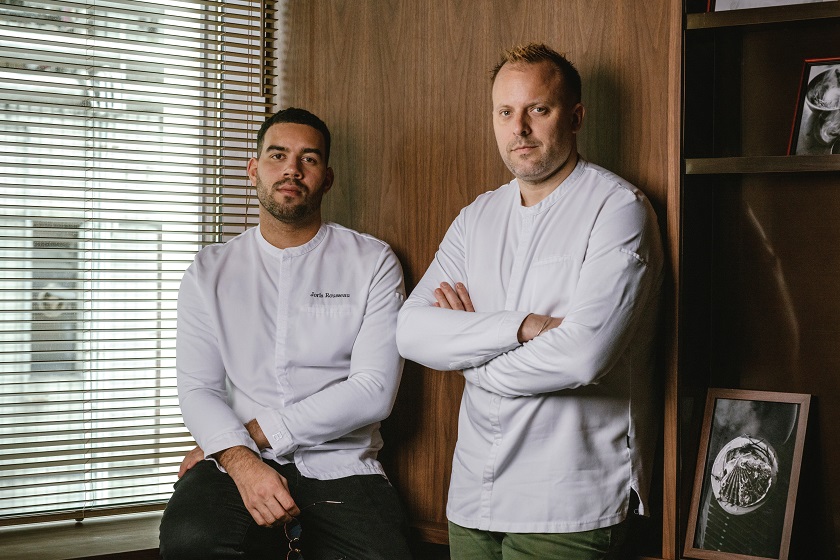Achieving zero hunger is still possible

This year marks the halfway point for implementing the Sustainable Development Goals (SDGs), the ambitious set of global targets introduced by the United Nations in 2015. These 17 goals, devised to address today’s most pressing challenges and put the world on the path to sustainability, seek to reduce poverty, improve access to health care and education, and mitigate the worst effects of climate change by 2030. But when it comes to meeting the critical goal of eradicating food insecurity, much of the progress made over the past decade has been undone.
When the SDGs were launched, the target of eliminating food insecurity and malnutrition worldwide within 15 years seemed ambitious but within reach. At the time, hunger levels had been trending lower for more than two decades, largely thanks to rising agricultural productivity and global economic growth.
Over the past few years, however, the world has been hit by a series of compounding crises, from the COVID-19 pandemic and the ongoing war in Ukraine to extreme weather events caused by climate change. As a result, global hunger has surged, with the world’s poorest people suffering the most.
According to a new UN report, approximately 735 million people are experiencing food insecurity, an increase of 122 million people since 2019. Alarmingly, seven countries – Somalia, Afghanistan, Burkina Faso, Haiti, Nigeria, South Sudan, and Yemen – are now on the brink of famine. Not only are we falling short of reaching zero hunger by 2030, but we are worse off than we were in 2015.
So, where do we go from here? To meet the UN’s zero-hunger target, we must first recognize who makes up the majority of the world’s poor and understand where most of their food comes from. The answer to both questions is surprisingly straightforward.
The vast majority of the world’s poorest individuals are the smallholder farmers who also produce most of the food consumed in many developing countries. These farmers have been hit hard by the shocks of the past few years, in addition to the systemic challenges that have kept them trapped in poverty and food insecurity. Yet within the current crisis lies an opportunity. By supporting smallholder farms, the international community could make significant strides toward ending global hunger.
Governments and international institutions can aid smallholder farmers and eliminate global food insecurity in several ways. First, most smallholder farms in developing countries generate disproportionately low crop yields compared to their developed-country counterparts, largely because they lack basic inputs, such as improved seeds and organic fertilizers. This is particularly evident in Sub-Saharan Africa, where yields for staple food crops are significantly lower than global averages. Increasing access to high-quality farm inputs, especially those that help farmers adapt to climate change, could thus greatly enhance food security.
Second, lack of access to credit prevents most smallholder farmers from purchasing improved agricultural inputs or investing in their farms. Greater global support for programs that provide these farmers with financing would help.
Third, smallholder farmers typically harvest crops once or twice a year. This means that food must be stored for months to ensure that supplies last until the next harvest. Given the limited access to proper storage technology, staple food grains are frequently exposed to damage by insects, mold, and other pests, contributing to post-harvest crop losses and household hunger. These smallholder farms require greater access to advanced storage options, including low-cost, hermetically sealed bags that can preserve crops for extended periods and eliminate the need to treat stored grains with potentially harmful insecticides.
Finally, smallholder farmers need better access to viable markets for their crops, enabling them to move beyond subsistence and build reliable livelihoods. The international community, alongside public- and private-sector actors, must do more to bolster local capacity and encourage investment in agricultural value chains. This would empower more smallholders to develop sustainable businesses.
Despite the massive challenges ahead, achieving zero hunger remains a feasible target. In September, global leaders attending the UN General Assembly will evaluate progress toward achieving the SDGs. If we are to create a world free from hunger, supporting agriculture and smallholder farmers must be at the top of the agenda.
Copyright: Project Syndicate
-- Contact us at [email protected]
-

Integration of GIS and BIM can drive development of smart city Dr. Winnie Tang
The China Association for Geospatial Industry and Sciences (“the CAGIS”) released the Top Ten Highlights of China's Geographic Information Industry in 2023, which provides much inspiration. The
-

Equip young people for the future Dr. Winnie Tang
In late February, the inaugural flight of an air taxi from Shenzhen Shekou Cruise Homeport to Zhuhai Jiuzhou Port took only 20 minutes with an estimated one-way ticket price of 200 to 300 yuan per
-

Are we raising a generation of leaders, or of followers? Brian YS Wong
The essence of education is defined not by the facts it imparts, but the potential knowledge it inspires students to individually pursue on their own. Put it this way – the ideal form of education
-

The urgent need for reforms to sex education in Hong Kong Sharon Chau
Nearly one in every four university students (23%) in Hong Kong has been sexually harassed, according to a 2019 report published by the Equal Opportunities Commission (EOC). A 2019 study found that
-

STEAM should be linked to real life Dr. Winnie Tang
In the 2017 Policy Address, STEM (science, technology, engineering and mathematics) education was proposed as one of the eight major directions to promote I&T development. Since then, funding has














